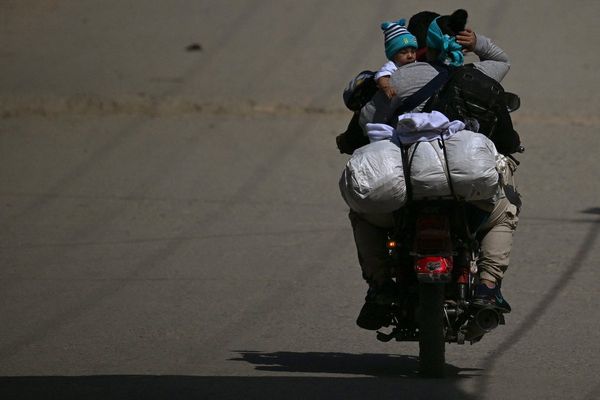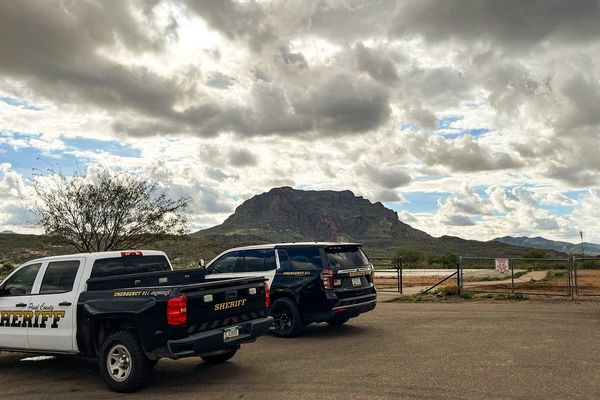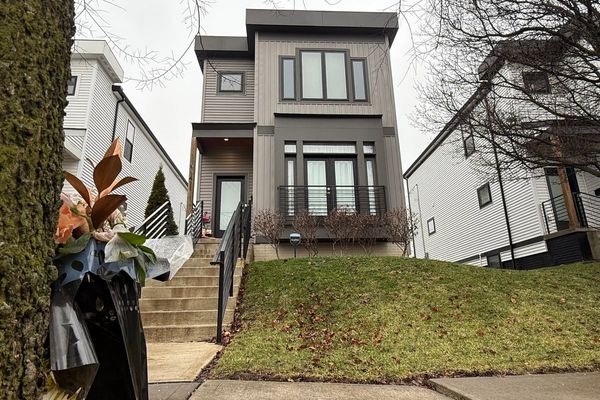
On the outskirts of Ouagadougou, the capital of Burkina Faso, there is an unusual golf club with no greenery.
Golf Club Naba Gninbolbo was constructed and conceived in 1975 by the village chief (better known as the “naaba” in the More language) of Balkuy along with a German friend. The two decided to convert farmland into a golf course, which started with nine holes and later expanded to 18.
“Our green is brown,” says Abdoul Tapsoba, who is the son of the founder and director of the club. Tapsoba is proud that the course is approved by the French golf federation.
“We use between 200 and 300 litres of water a day to keep the club running smoothly,” says Salif Samaké, the president of the Burkinabé golf federation. “Burkina is a Sahelian country, water is a scarce commodity, we cannot afford a club with grass. We want to play golf, but in our reality.”
Golf courses are famously incredibly hungry for water. In 2013, for example, a review of US golf courses found that they were using 1.44% of all America’s irrigation water. They also have a reputation for heavy use of pesticides and herbicides, in order to keep those greens weed- and insect-free.
And in recent years many have called attention to the problem around their land use, including the argument that their footprint per player is higher than any other sport, which seems concerning when land, particularly in urban settings, is at such a premium.
In 2016, the architect Russell Curtis calculated there was enough space on London’s publicly owned golf courses to house 300,000 people. He also looked at the discrepancy in user numbers of these green spaces and worked out that an 18-hole course could accommodate 72 players at any one time, allowing a maximum of 216 players on a typical summer’s day. On that basis, if the 166 hectares (410 acres) of Regent’s Park were to become a golf course, it could be used by 314 people a day; the park averaged almost 22,000 a day in 2014, according to the Royal Parks.
In the past decade and a half, the industry has made more noise about its environmental impact, with courses announcing plans to become eco-friendly, to the extent that Golf World now publishes an annual Green 100, highlighting the greenest courses in Europe. The scale of the initiatives varies, from courses that make their own bread or have moved over to LED lights, to courses that have sheep maintain the grass, or have invested in solar panels or created large water and wild areas.
But Naba Gninbolbo has found its own way. In Burkina Faso only 47% of the population has access to clean drinking water close to home, according to the NGO WaterAid West Africa. There is rain, about 700mm to 800mm of rain a year, but the infrastructure for storage is poor, which means that women and children spend part of their day going to the nearest well to fill 20-litre water cans and then returning home with about 200 litres thanks to the pousse-pousse, a metal structure with two wheels.
The greens at the golf course are not lawns, but are made instead from a mixture of sand and used motor oil, which prevents the sand from being blown away by the wind, making it more compact. The wildlife is all welcome. Cows, sheep and goats wander through the course as if it is their home, and during the rainy season (from June to September), they are responsible for eating the grass. They belong to a small fula village (an ethnic group historically known for their nomadic lifestyle and close relationship with cattle) that has become integrated into the golf club circuit.
The club has about 60 players, most of them Burkinabé, but it also employs a large number of local young people as caddies, such as Gilbert Kaboré, also born in Balkuy, who began caddying when he was six. “I came with my older brothers, I saw them play and work, I ran ahead of the patron to fetch the balls that went into the woods,” he says. Now he teaches foreigners living in Ouagadougou and beginners to make their first moves in this sport, which Kaboré learned by observing.
“The club is situated on a hill, we have views of the city and coexist with the animals that sleep on the greens at night,” says Samaké, adding: “We play with the earth, the dust, with the nature we have, we haven’t cut down a single tree.”







